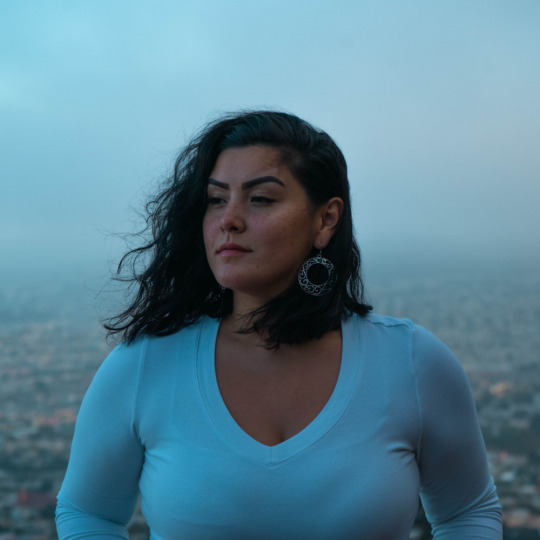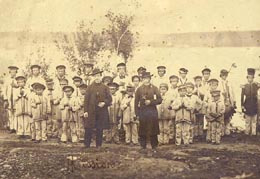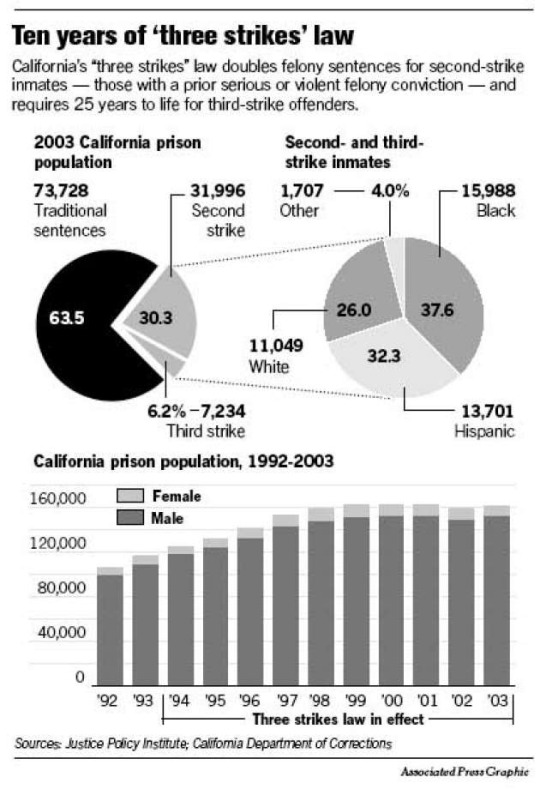Don't wanna be here? Send us removal request.
Text
ART150: Multicultural America
Journal
For my multimedia Journal I chose to view and reflect on the docuseries When They See Us, the documentary 13th, and artist and activist Calina Lawrence. When They See Us follows the story of five young boys falsely accused and committed of a serious crime in Central Park. The show highlights several injustices to the Black community including racial profiling, police brutality and problems within the prison system. 13th explains the shift that has happened in America from slavery to the mass incarceration of predominantly young Black men. The documentary discusses several problems within the prison system and the cyclical imprisonment that follows the Black community. Calina Lawrence is a singer and songwriter who uses her art to showcase her native language, and bring awareness to her Native American culture as well as several social injustices.
0 notes
Text
ART150: Multicultural America
Calina Lawrence is an artist and activist who was born and raised within the Suquamish Nation, a Native American tribe located in Washington. As an artist she uses her music and spoken word to bring awareness to her native culture and the preservation of Suquamish traditions as well as addressing social injustices like police brutality, suicide prevention, violence against women, and nature preservation.

In 2019 Lawrence released ʔəshəliʔ ti txʷəlšucid, translated to Lushootseed is Alive, a song written and preformed in her native Lushootseed language. Lushootseed is an endangered language with currently only five native speakers, worldwide (Golla, Goddard, Campbell, Mithun, Mixco). New generations of Suquamish people, like Calina Lawrence, are working to preserve and bring this language back.
https://youtu.be/xnuF2UkCqAs
The Suquamish Tribe is originally from the Pacific Northwest, a population who lived off the land as “people of the clear salt water,” they were expert fisherman, canoe builders, and basket weavers. In the 1850’s white settlers came and began to purchase their land through the Treaty of Point Elliott, and the Suquamish people were relocated. The tribe was able to resist many forms of assimilation, but from 1900-1920 mandates were put in place to force Suquamish children to attend Indian Boarding Schools. It was here in these schools, where their native language was no longer allowed, that it began to disappear altogether. “For decades, federal Indian policy, which aimed at forced assimilation, required children to be removed from their homes and reservation communities, and enrolled in boarding schools, where many were punished or beaten for speaking their Native languages. As a result, generations of Native people either never learned their language, or lost their fluency in it, and many links to traditional culture were broken” (Crosscut)

Father Chirouse posing with students at Tulalip Indian School, Tulalip, 1865 Photo by W. F. Robertson, Courtesy UW Special Collections (Neg No. NA1498)
In week two of our class we learned about the events that happened at Wounded Knee, and horrible treatment of Native Americans after white westerners came and forced assimilation on them. It was through this assimilation that many traditional cultures were lost. Calina Lawrence is well aware of the treatment that Native Americans have gone through and is working hard to bring awareness to it, and protect her culture and native language. She said of her work “It’s the main tool of ethnocide and genocide, is to attack the language of a specific landscape, of a specific people, right? And you will talk to so many different indigenous peoples across this continent, across the world, right? That says that language belongs to the land and, because we say we are of the land, that we belong to the land, so we belong to a language” (Teodros). Throughout our class we have learned that representation of cultures is important, and Lawrence is working to represent her culture through her music and activism work.
Resources:
Victor Golla, Ives Goddard, Lyle Campbell, Marianne Mithun and Mauricio Mixco. 2008. "North America." In Atlas of the World's Languages, edited by Chris Moseley and Ron Asher. 7-41. Routledge.
Teodros, Gabriel. Sound & Vison: Calina Lawrence on the Power of Language. Kexp, October, 16 2019, https://kexp.org/read/2019/10/16/sound-vision-calina-lawrence-power-language/
Taylor, Holly. Perserving the Lushootseed language for the next generation. Crosscut, May, 5 2010, https://crosscut.com/2010/05/preserving-lushootseed-language-for-next-generatio
4 notes
·
View notes
Text
ART150: Multicultural America
The documentary 13th by Ana DuVernay discusses the shift from pre-Civil War slavery to the mass incarnation of African Americans after the Thirteenth Amendment was passed. It highlights the injustices that occur within the prison system and the laws and regulations that have been passed to continue to keep African Americans, predominantly men, enslaved.

Image via https://capitalandmain.com/ava-duvernays-13th-amendment-documentary-packs-a-wallop-1013
The documentary explained that following the passing of the Thirteenth Amendment, the Black population was incarcerated at extremely accelerated levels, often for minor, petty crimes, but received harsh and lengthy sentences. The prisons then used these individuals to provide cheap labor for rebuilding infrastructures to boost the economy. These young black men shifted from being slaves on plantations to being enslaved by the government. The documentary explained how laws such as the Three Strikes Law work to keep individuals incarcerated for longer periods of time and take discretion away from judges in order to give more power to attorneys. The documentary also discusses how ALEC laws work to provide financial interest into the prison business.

Our class and this documentary heavily cover how the media is able to sway viewers opinions about certain cultures. After the Thirteenth Amendment was passed, African American men were described as “menacing Negro Males” (13th) in the media pushing the idea that these men were dangerous. These ideas added to incarceration by singling out black individuals. “Birth of a Nation” is another source that has been covered consistently as a media outlet that has led to negative views of the African American population. After it’s release in 1915 it gained a mass following that was exposed to the portrayal of black men as criminals and a threat to white women. “Through a Lens Darkly,” which we watched in week two, described the “portrayal of African Americans as less than humans” and described Birth of a Nation as a “larger than life misrepresentation that all but obliterated the individual and collective images of Black families building themselves up in the aftermath of slavery” (Through a Lens Darkly). This film and the news were detrimental to the treatment of African Americans during a time when they should have been able to celebrate the end of slavery.
https://youtu.be/b0HZG7631xM
The documentary 13th discussed how today, 155 years after slavery has ended, African American males are still overrepresented in the news as criminals, and still thought of by some as a dangerous population. The film stated that black men currently account for only 6.5% of the United States population but 40.2% of the prison population (13th). Highlighting the fact that a massive amount of work still needs to be done to bring justice to the Black community.
Works Cited:
“Through a Lens Darkly.” Films On Demand, Films Media Group, 2015, fod.infobase.com/PortalPlaylists.aspx?wID=240117&xtid=142114. Accessed 20 July 2020.
Ava DuVernay and Jason Moran. (2016) 13th. USA.
0 notes
Text
ART150: Multicultural America
When They See Us is a docuseries of a true story that follows the wrongful conviction of five boys who were accused of raping and beating a woman in Central Park of Manhattan. The series highlighted how racial profiling and coercion by police led to these wrongful convictions. In the beginning of the series they showed and alluded to the idea that after such an awful crime was committed against a white woman in a public park, the city was in a state of unrest and demanding justice. Detectives from the NYPD were eager to answer these demands, and rushed to find and convict the perpetrators with little to no evidence. After conviction, the series follows the negative and harmful effects that have followed the boys and their families. The series ends by showing how the conviction was overturned after the guilty perpetrator confessed to his crimes, ultimately freeing the boys. Throughout our course on a Multicultural America we have learned how the African American community has been unjustly treated and has had prejudices against them for hundreds of years. In the Central Park Five case, one decided by a jury, I believe these long-standing prejudices worked against the boys and lead to their convictions.
Our class has discussed how art and media are able to shape the viewers perception of a particular “race” or culture of people. The documentary “Through a Lenz Darkly” explained how in the very beginnings of commercialized media the Black population had been portrayed as criminals and untrustworthy people. The documentary inspired by Deborah Willis’s book Reflections in Black then showed how important representation in the Black community is. Through representation, African American artists are able to portray realistic versions of themselves and their community. When They See Us discussed how Donald Trump took out a full-page ad in four New York City newspapers demanding to bring back the death penalty, voicing his stance on the trial against the five young black boys. "I have never done anything that's caused a more positive stir. I've had 15,000 — 15,000 — letters in the last week and a half," Trump said. "The ad's basically very strong and vocal, they are saying bring back law and order. And I'm not just referring to New York, I'm referring to everything" (Morin). His advertisement and statement are able to show just how impactful advertisements and media can be. The jury that convicted The Central Park Five were likely exposed to these ads or, at some point in their life, media that influenced preconceived ideas about the boys at trial. These ideas likely helped the prosecution, who had no evidence besides placing young black boys in a park, with their case.
At the time, this case and the media were able to highlight the mistreatment of the African American population by the police, and the prejudices against them. When the documentary came out, the conversations were reignited. Audiences were able to see how the story played out, and experience the pain that injustice can bring.
Morin, Rebecca. “They admitted their guilt: 30 years of Trump’s comments about the Central Park Five.” USA Today, 19 June. 2019 https://www.usatoday.com/story/news/politics/2019/06/19/what-trump-has-said-central-park-five/1501321001/
youtube
1 note
·
View note